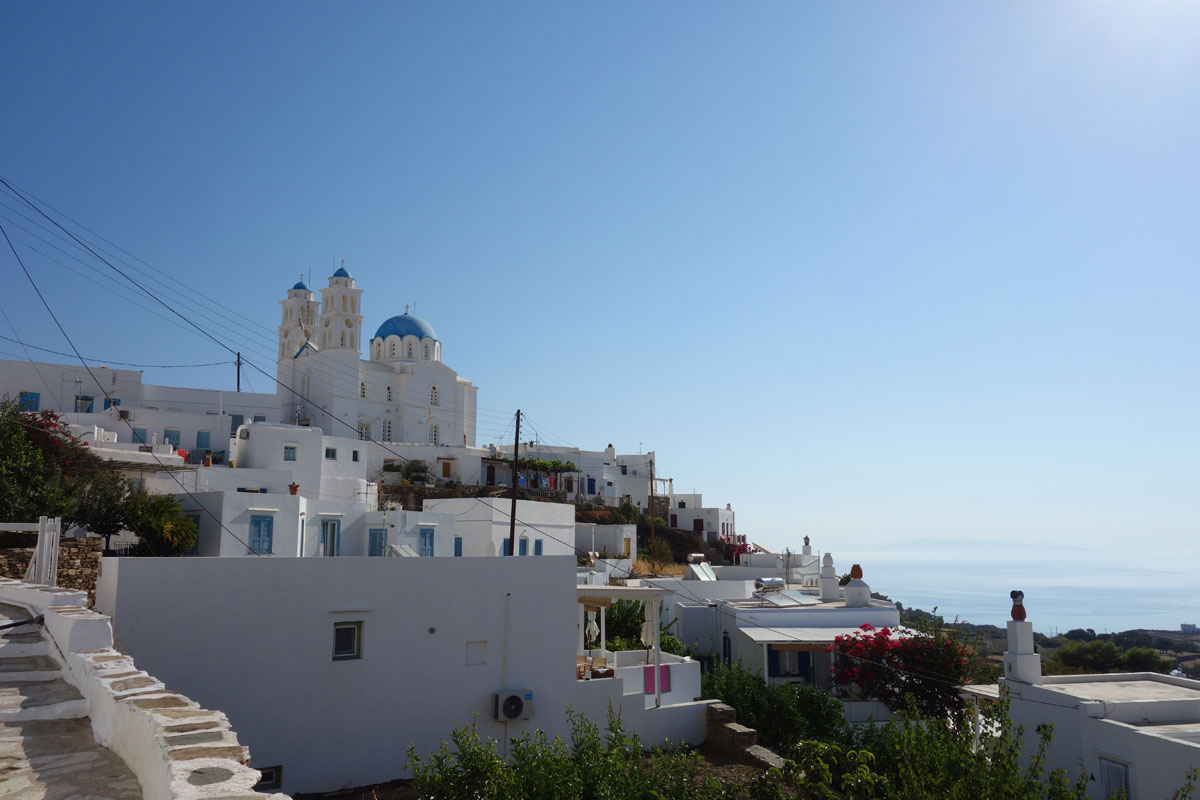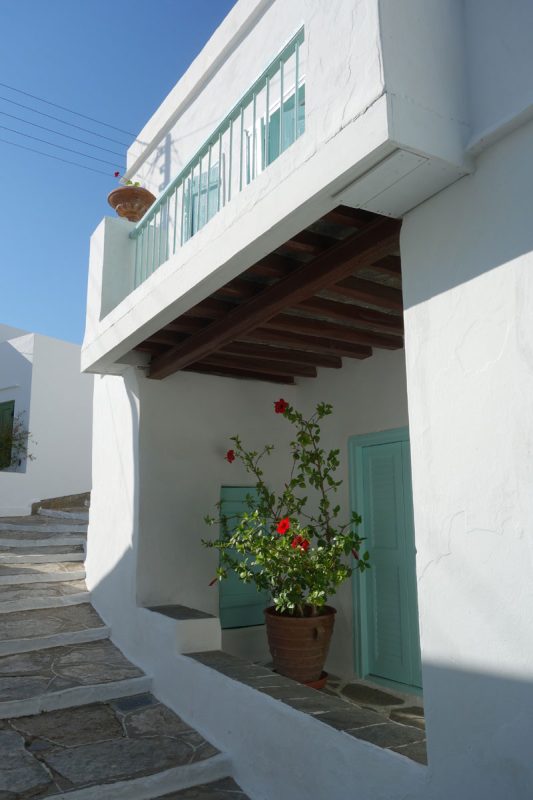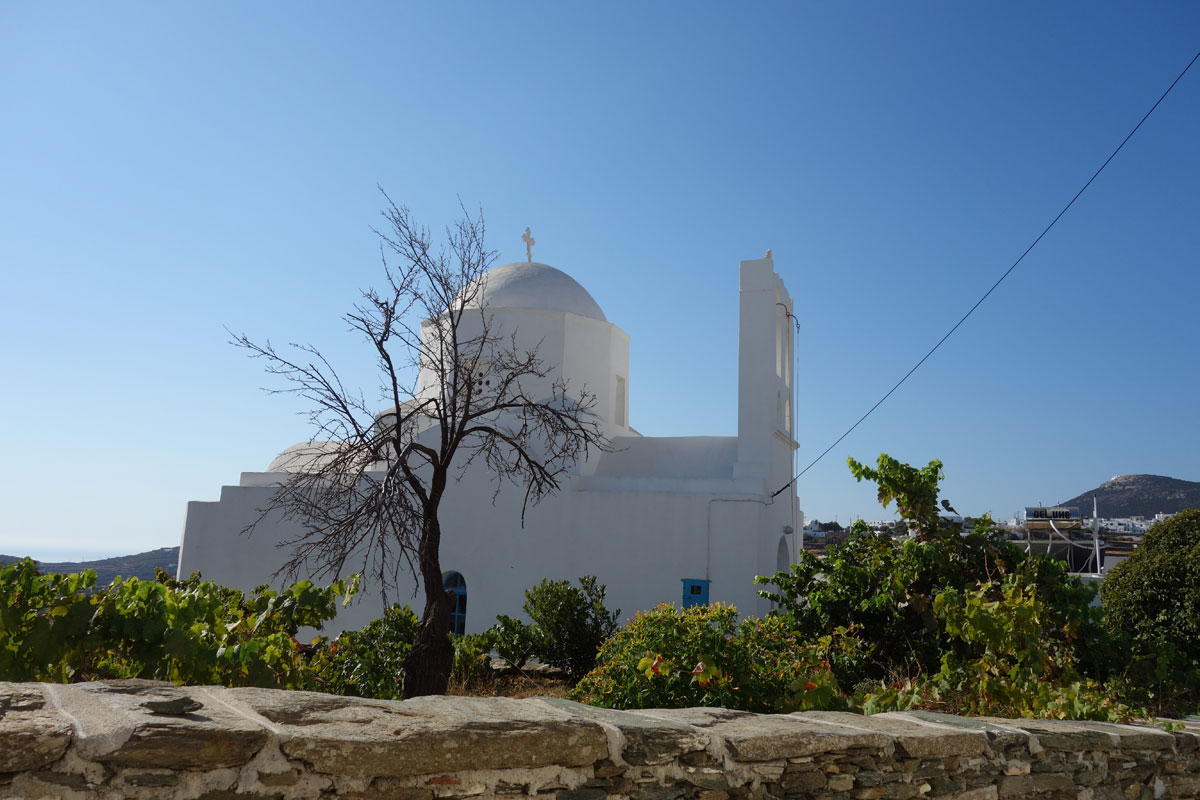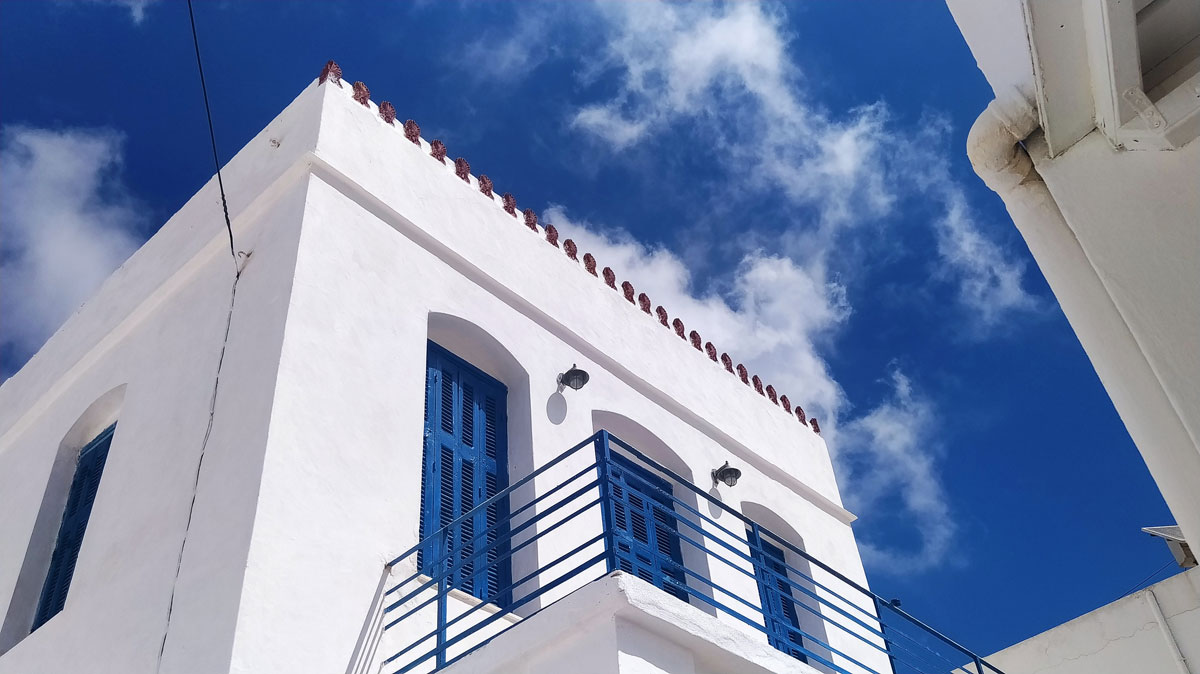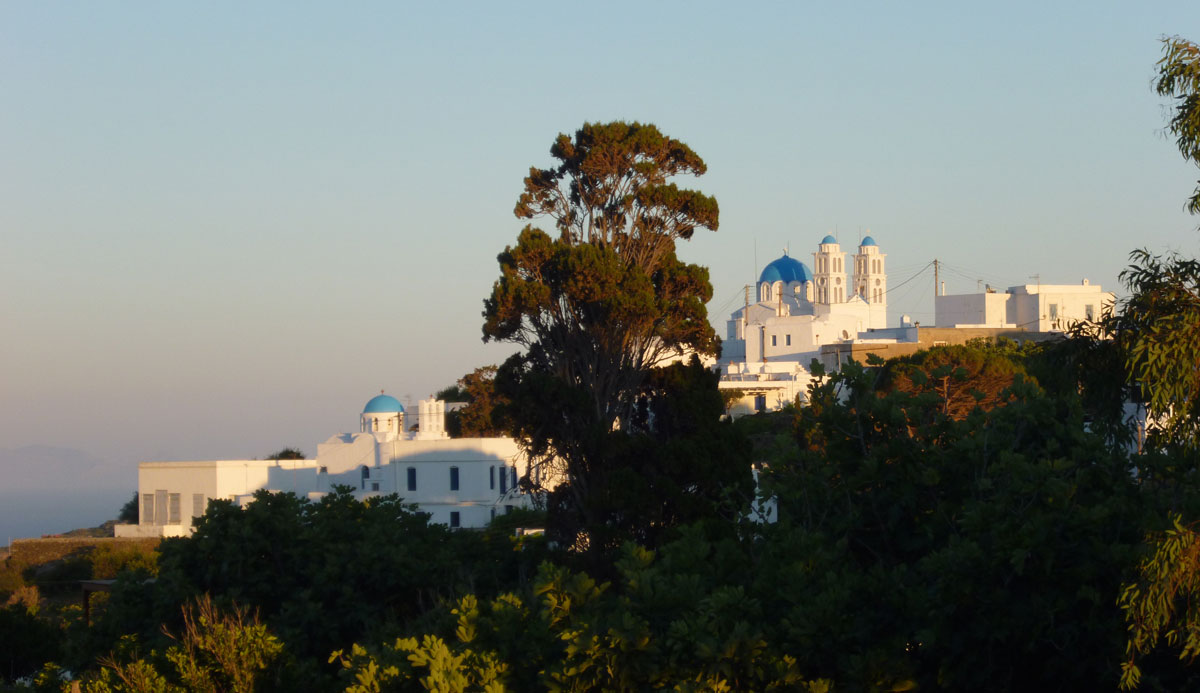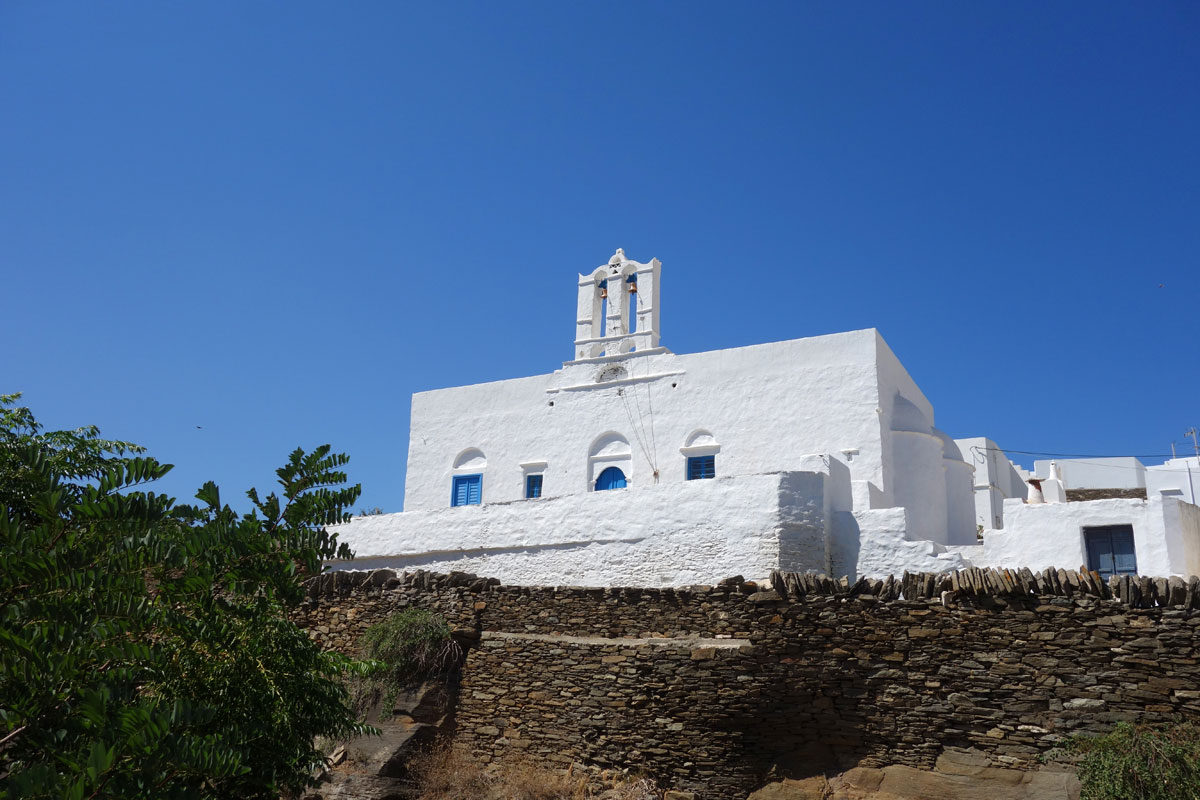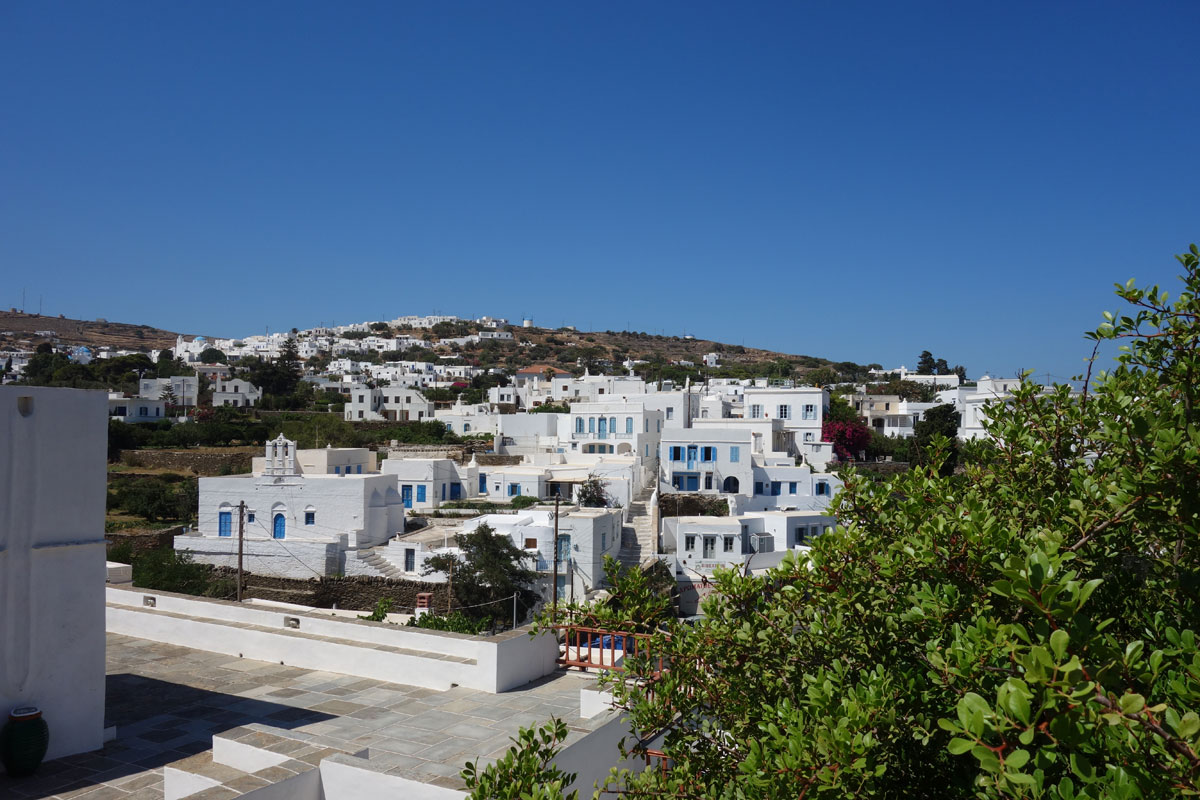If you go only for one walk, this will probably be the one!
This is the most typical walk in Sifnos. From Artemonas to Apollonia – or the other way round, from Apollonia to Artemonas if you don’t mind walking up. This is the first walk for local children who leave their village for the first time, and one which is followed by hundreds of visitors every day. It is the walk you will do if you do only one.
I prefer to start from Artemonas because there is more going down than going up and because the view when going down is super nice. Start from Artemonas square and take the stone paved path on your right, the one that goes down. At the beginning you are accompanied by the smell of bakeries. After a few meters, stop for a few minutes at Chrysogelos square and see the statue of the most important teacher of Sifnos, also the first Minister of Education of the first new Greek State at around 1830s.
Continue the steps down the path, taking a glimpse at the yards, the pots with flowers, the old wooden doors. When you see the asphalt road on your left… ignore it and keep walking on the stone paved path. Now it starts going up. On your way you will see traditional houses with white lines around the stones in the yards, ceramic chimneys, flat roofs and sisterns. It is a good chance to think that in the past everything was made for a practical reason.
Strolling down and gazing around, you arrive at the top of the hill, in the heart of Pano Petali village, at the end of “going up” part! In a few meters you will find Saint John church (Yiannis in Greek) with the incredible view.
Following the path further down, a small garden with vegetables and fruits will remind you of the old times when families were self-sufficient, while on the other side of the path caper bushes have covered a high wall!
There are only a few meters left. If you are not in a hurry, stop for a while at Panagia Geraniofora church, you will recognize it from the ancient column in the middle of its yard.
In the next few minutes, Apollonia square proves that the central villages are really close to each other!
